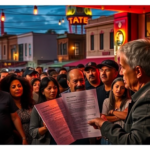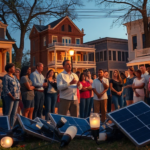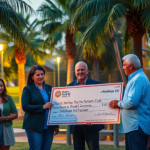Celebrating Rotary Clubs as Key Assets for RioPlex’s Growth
A recent column by Dr. Elaine Hernandez, the incoming district governor for Rotary International District 5930, underscores the crucial role Rotary Clubs play as local assets in the RioPlex region. The RioPlex, a unique cross-border initiative, aims to strengthen social and economic ties between South Texas and northeastern Mexico. With 121 clubs spanning District 5930 and District 4130, Rotary’s network is at the forefront of fostering community and business relationships vital to the area’s growth.
Rotary’s Role in the RioPlex Initiative
The RioPlex initiative was designed to link communities across the Rio Grande River through cultural, economic, and business collaborations. Rotary Clubs are integral to this mission, joining forces with businesses and community leaders to address pressing local needs, thereby creating a fertile ground for investment and development. Dr. Hernandez’s articulate portrayal of the Rotary movement in her guest column on the Rio Grande Guardian further highlights the clubs’ contributions to bridging the border divide with meaningful collaborations.
“The Rotary Club’s dedication to volunteer service and its vast network of professionals are critical in ensuring that our region thrives both economically and culturally,” Dr. Hernandez noted in her piece. “As businesses increasingly establish roots here, they will discover a welcoming community of like-minded individuals focused on mutual growth and success.”
The Rio Grande Valley’s Economic Potential
For the residents of the Rio Grande Valley, the importance of promoting an attractive investment ecosystem cannot be overstated. The region, known for its rich heritage and dynamic demographic, has often been at the crossroads of economic potential and socio-political challenges. The presence of 121 Rotary Clubs signifies not just a mutual commitment to service but also a conduit for strengthening local impact and fostering sustainable development opportunities.
According to Hidalgo County Judge Richard Cortez, during a recent summit in Houston, the region already houses numerous “world-class assets.” By reinforcing ties via Rotary’s collaborative framework, the Valley can leverage existing assets to expand its influence and appeal as a vibrant hub for both domestic and international investors.
Connecting Community and Commerce
For Valley residents, the extension of Rotary’s initiatives can mean expanded access to resources, mentorship, and vocational training, driving community interest and involvement in both civic and economic life. Local real estate agent Juan Morales sees the emerging impact firsthand. “The dynamics are changing; businesses are not merely setting up shop here but engaging with the community through service initiatives. This approach increases our educational and employment prospects, which is vital for our future generations.”
Furthermore, Dr. Hernandez’s insights present a case for how the network of Rotary Clubs can act as a springboard for North American economic integration. Recent articles, such as insights shared by Lorenzo Barrera Segovia on the American Chamber of Commerce Mexico’s role, suggest the pivotal nature of these initiatives in building a robust cross-border economy.
Lessons from the Past and Future Prospects
The current emphasis on utilizing Rotary’s collaborative network resonates with past community efforts aimed at enhancing the Valley’s economic landscape. Critical to this is ensuring that developments are both inclusive and sustainable. As echoed by Dr. Gary Mounce in his reflective column “Who Will Save You?” harnessing the power of local organizations can drive meaningful change in times of economic uncertainty.
Looking to the future, the potential integration of Rotary’s global reach with local advocacy presents a compelling opportunity for economic and social revitalization. Community leaders and policy stakeholders are encouraged to harness these relationships further, contributing to a cohesive regional strategy that prioritizes growth, resilience, and equity.
Stakeholder Feedback and Continued Engagement
While the prospects are positive, stakeholders emphasize the need for continued dialogue and adaptability. Engagement efforts, such as public forums and cross-sector partnerships, can further ensure that all community voices are heard and incorporated into strategic plans. This aligns with the Guardian’s mission of fostering community interaction and feedback, encouraging residents to contribute stories and insights that affect their locality.
In conclusion, as Dr. Hernandez eloquently portrays in her column, Rotary Clubs in the RioPlex are more than service groups; they are pivotal agents of change. As the region stands on the brink of transformational growth, their role in connecting cultures, fostering community interest, and encouraging Valley residents to invest in their future becomes indisputable. With strategic vision and committed participation, the path forward for the Rio Grande Valley looks not only promising but truly transformative.







